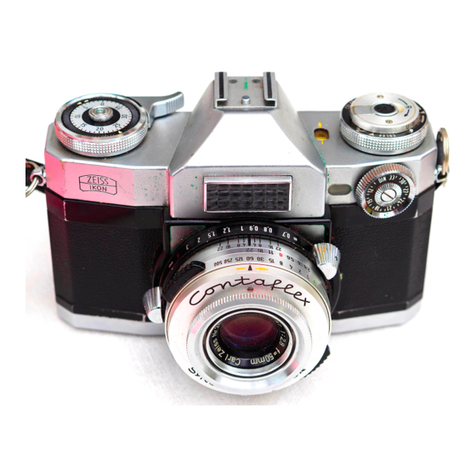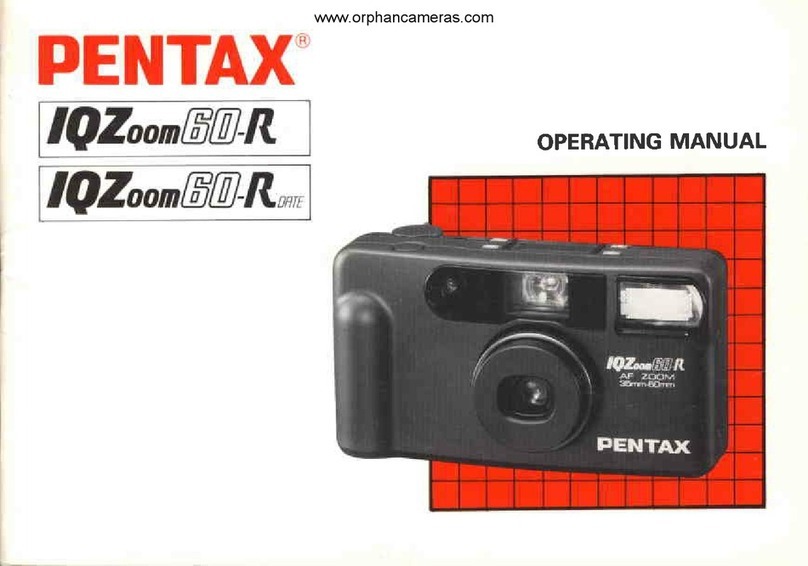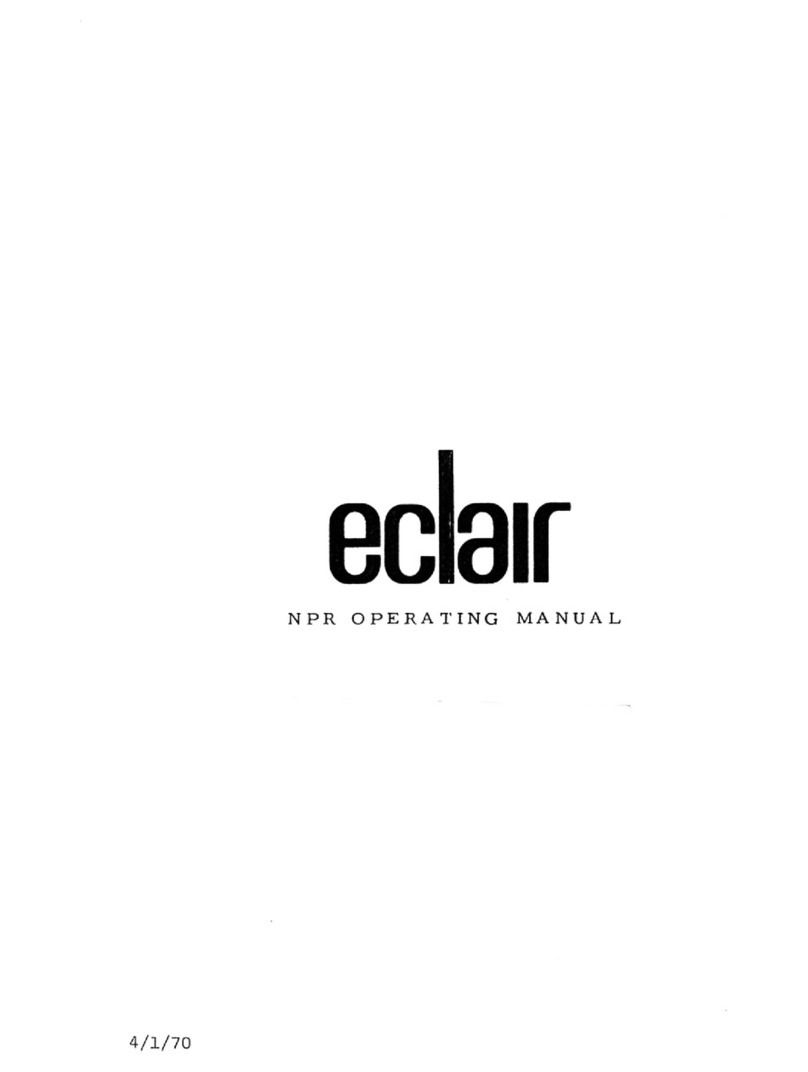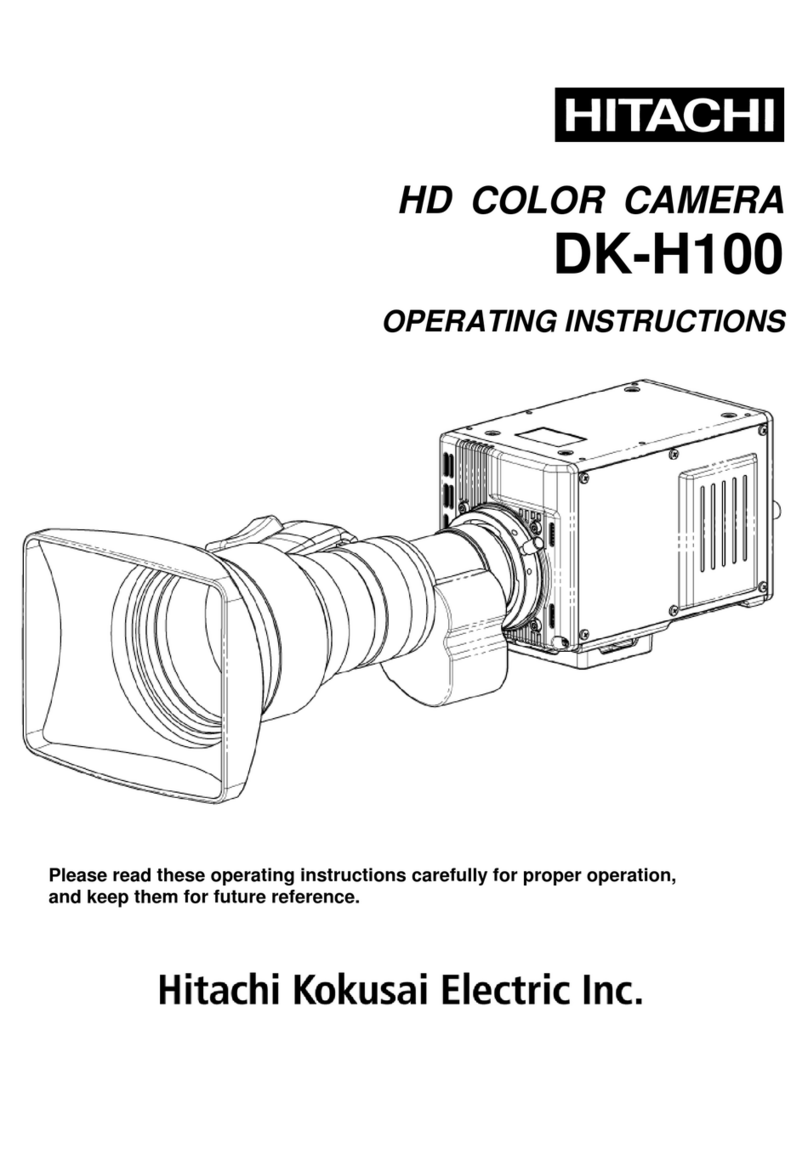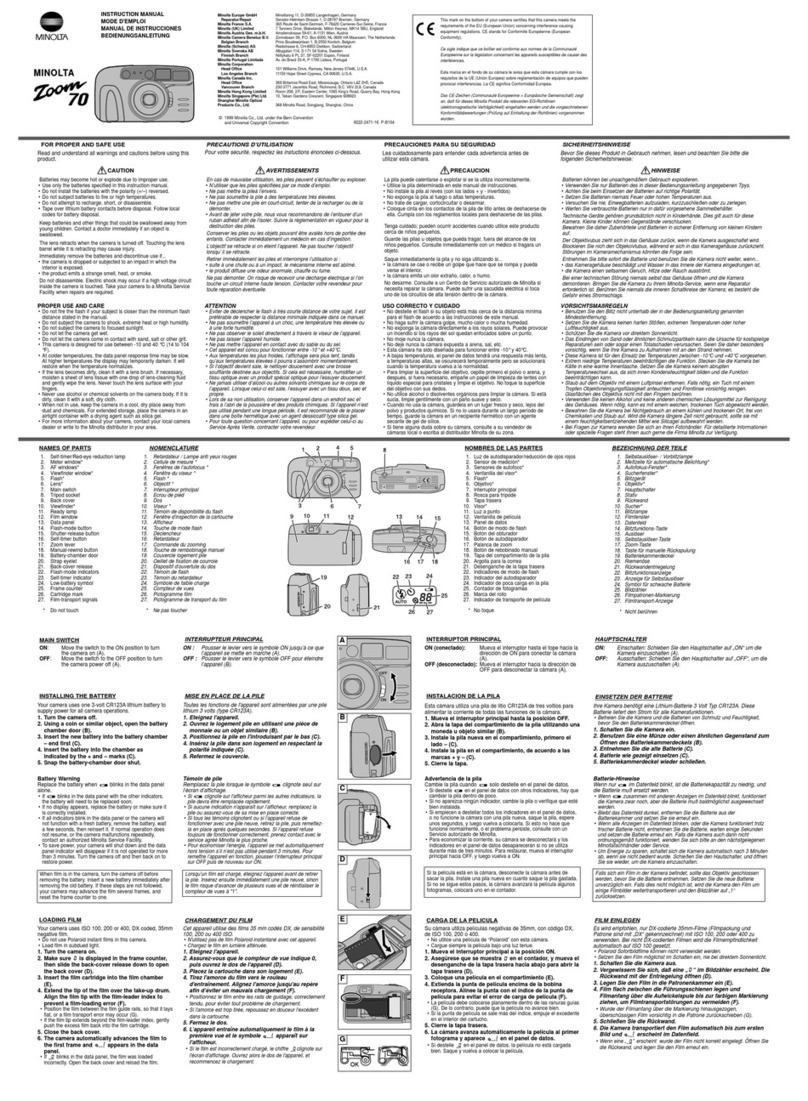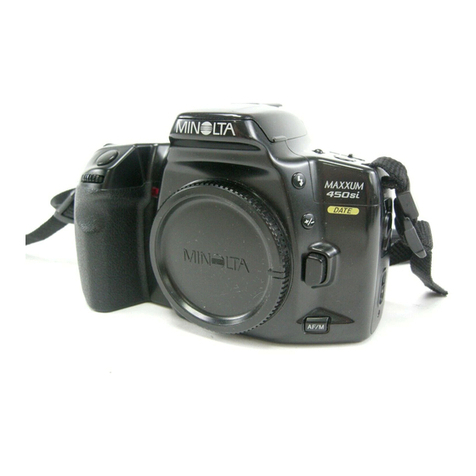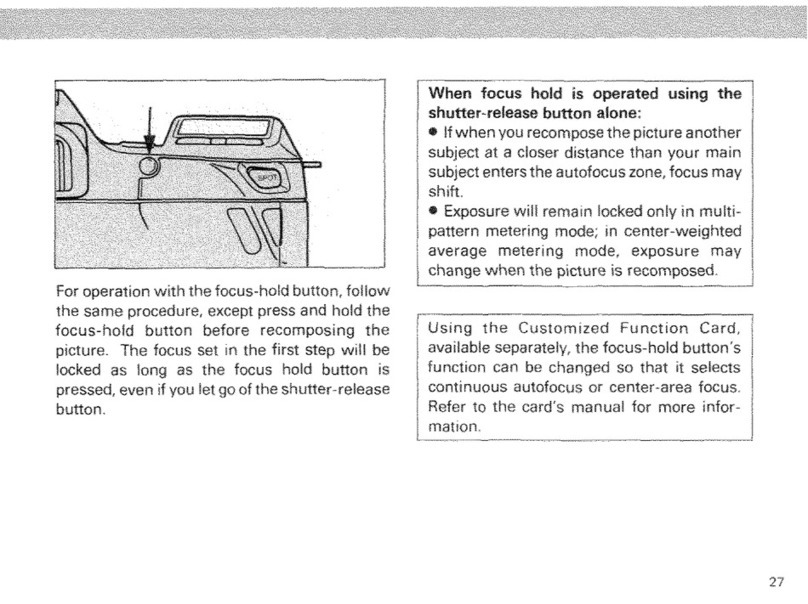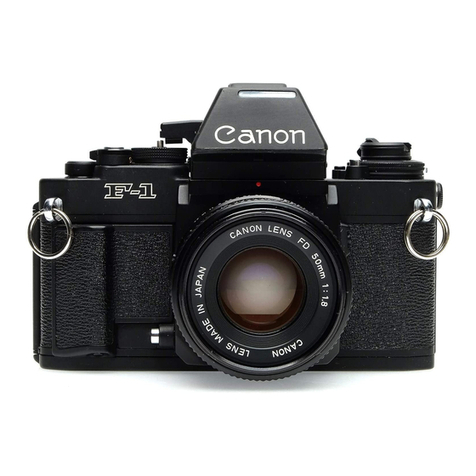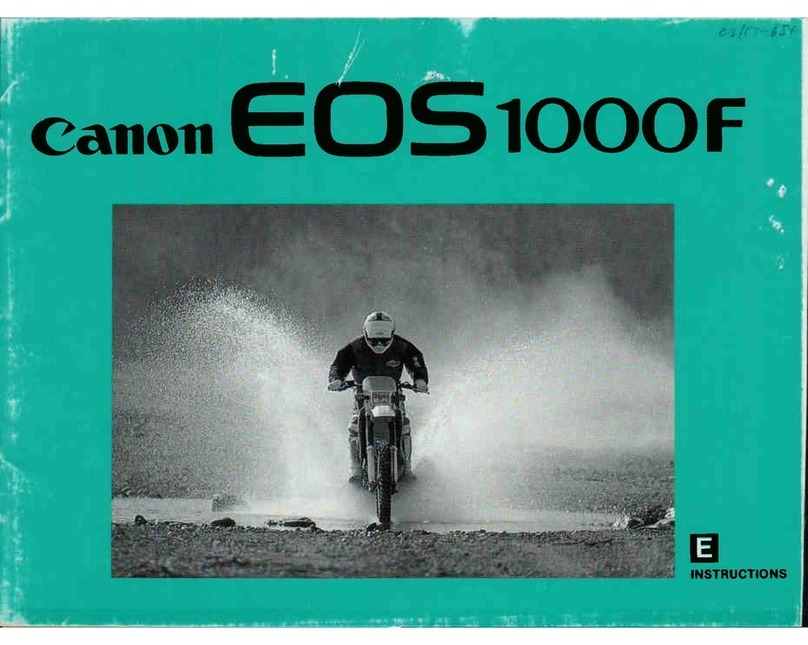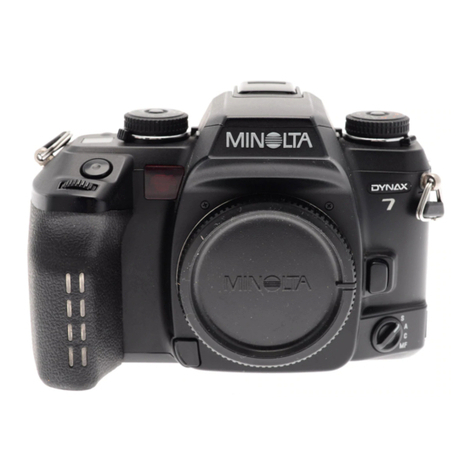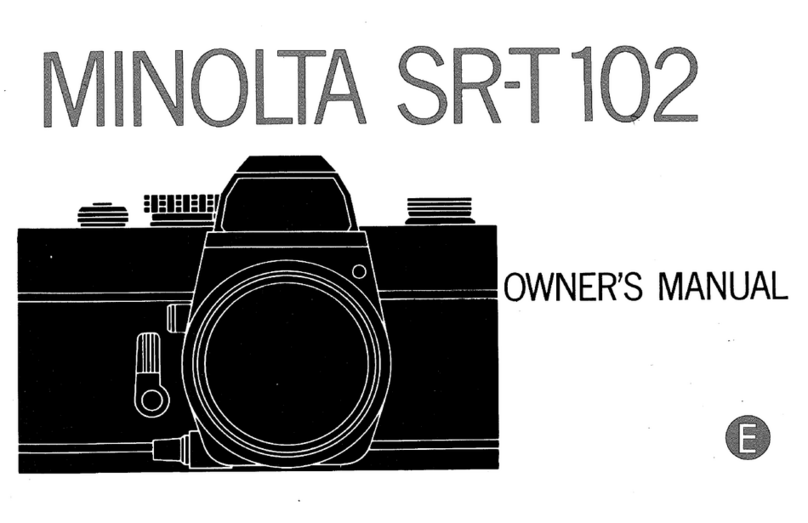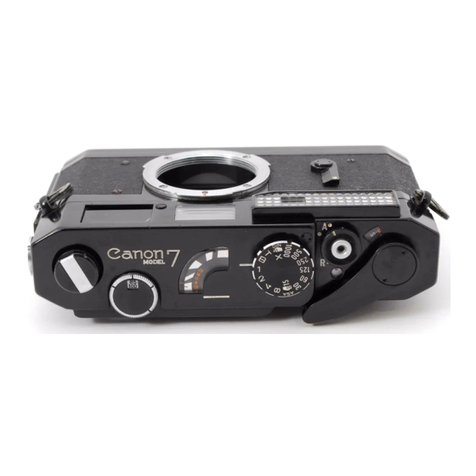
Measuring the efrIromrre tirne
The dependable built-in exposure meter indicates the correct exposure time
and stop for black and white and colour film, for negative as well as for
reversal^ film. First the speed of the film to be used mlust be set. Turn the
inner disc by means of -the small knob (5) until the relevant qpee4 value
appears opposite the black mark of the DIN or ASA window. The disc can
also be set to intermediate speeds (ill. 1).
If the film manufacturer has rated the film speeds in other than DIN or ASA
ratings, the corresponding values can be found in the table on page 5.
Ibeib'eed of coloir reoelsal film cannot be determined so easily.ior reoersal
colour film ihe uposure depends on tLte brigbtness of tbe. brightest biqltligbt
tbat tb'e pbotographer wisb'es to record and- not on tbe d.epth of tbe deepest
sbadow. Jor tlbtis reason tbe film manufacturers coDer the speed r.alingt. pf
their reoersal colour films witb upressions like, " . . . to be expo.sed like f ilm
of xx ASA". jn den'eral, tbese indications are reasonably reliable and gioe
riood results. Jor ihis reAson colour neQatioe f ilms can be used witb t.be speed
"oalue printed on tlte box. lf you want to make absolutely sure, make a f ew
test exposures witb difterent'exposure times on tlte colour film you intend to use.
4





